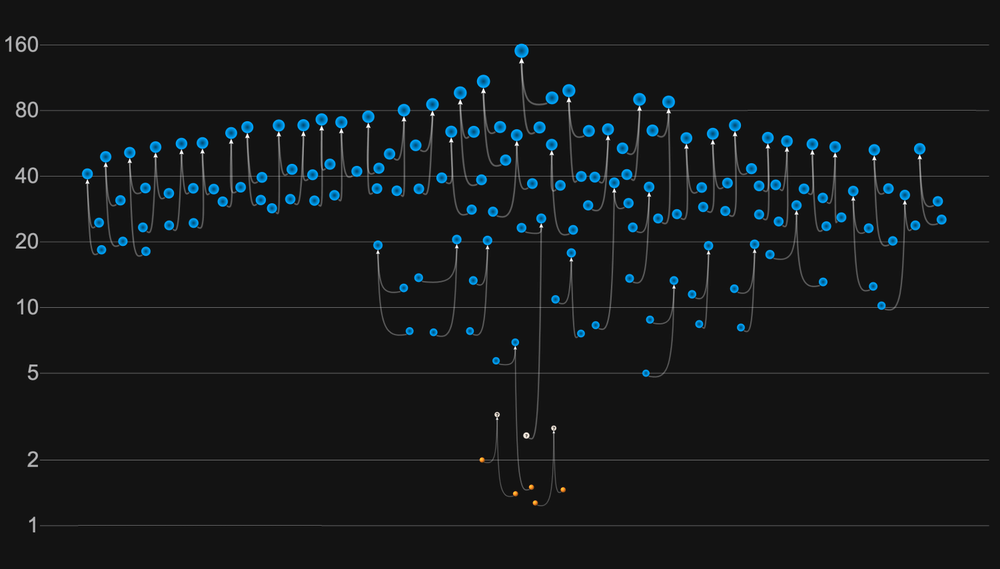Black Holes Studied as a Population

F. Elavsky and A. Geller/Northwestern Univ./LIGO-Virgo Collaboration
May 7, 2021• Physics 14, 67
The latest dataset from gravitational-wave observatories has enough events to allow researchers to study properties of the whole population of black holes.
Black holes (blue), neutron stars (orange), and compact objects of uncertain nature (gray) detected via gravitational waves through September 2019. Each binary merger involves three compact objects: the two coalescing objects and the final remnant. The vertical scale is in solar masses.
Less than six years after the first detection of gravitational waves, observations are becoming routine, with LIGO and Virgo logging black hole mergers more than once per week. At the APS April meeting, the LIGO-Virgo Collaboration (LVC) reported using their catalog of nearly 50 events to estimate the typical properties and histories of black holes. Measurements of black hole spins, for example, suggest that at least two different formation mechanisms are common for black hole binaries. These black hole “population” studies—akin to astronomers’ star surveys—are becoming a prized tool for gravitational-wave scientists, in addition to studies of individual events.
The black holes in the LVC catalog are stellar-mass black holes—the remnants of giant stars after they explode as supernovae. In the past, astronomers could spot these black holes only when they were in a binary orbit with a normal star, but the LIGO and Virgo observatories have revolutionized the field since 2015. “The vast majority of the stellar-mass black holes that we know about in the Universe [were detected via] gravitational waves,” said Carl Rodriguez of Carnegie Mellon University, Pennsylvania, in his presentation at the conference. So gravitational waves are now the main source of data from which astrophysicists will learn about these objects. “For the first time, we’re able to do astronomy” using gravitational waves, said Maya Fishbach of Northwestern University, Illinois, a member of the LVC. “We’re really going to learn more about star formation in general.”
See full text